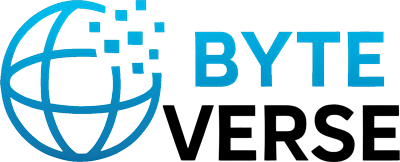By [Yash Kapoor], Trade & Diplomacy Correspondent
After more than a decade of on-again, off-again negotiations, the India–European Union (EU) Free Trade Agreement (FTA) is finally gaining traction. But while headlines tout “breakthroughs” and “historic milestones,” the reality remains far more complicated. A mix of mutual benefit, deep-seated distrust, and geopolitical urgency is fueling renewed momentum—but also laying bare some tough compromises ahead.
As both New Delhi and Brussels navigate a rapidly changing global trade landscape—marked by supply chain realignments, China+1 strategies, and energy transitions—this agreement is more than just a bilateral pact. It’s a test case for whether democracies with vastly different economic models can forge a genuinely balanced trade relationship in a multipolar world.
📜 A Long, Winding Road
Negotiations between India and the EU began in 2007, but by 2013, they had collapsed amid disagreements on tariffs, intellectual property, and market access. The EU wanted India to open sectors like financial services and government procurement. India, in turn, demanded easier labor mobility and protection for its small-scale industries.
Talks resumed in 2022, spurred by several factors:
- Brexit: The EU was looking to diversify trade after losing the UK.
- China’s assertiveness: Both sides viewed closer cooperation as a hedge against China.
- Pandemic-induced supply chain shocks: Created urgency for trade diversification.
By 2025, over 18 rounds of talks have taken place, with visible progress—but also plenty of sticking points.
🔍 The Breakthroughs
The most recent Brussels round (July 2025) yielded progress on several fronts:
- Digital Trade Framework: A landmark agreement on cross-border data flows, while respecting India’s data localization laws.
- Sustainability Provisions: India agreed to phase in environmental and labor standards in select industries, allowing EU access to green technology in return.
- Tariff Reductions: India offered phased tariff cuts on European wines, dairy, and automobiles. In exchange, the EU will ease restrictions on Indian textiles and pharmaceuticals.
- Geographical Indications (GIs): Both sides reached consensus on recognizing specific regional products—like India’s Darjeeling tea and the EU’s Parmigiano Reggiano.
“This deal reflects modern trade priorities—digital, green, and inclusive,” said Valdis Dombrovskis, EU Trade Commissioner.
⚠️ The Roadblocks
However, several thorny issues remain unresolved:
- Mobility of Skilled Labor: India wants smoother visa regimes for IT and engineering professionals. EU member states remain hesitant, citing immigration concerns.
- Investor-State Dispute Settlement (ISDS): India withdrew from several bilateral investment treaties in recent years. The EU demands a strong legal framework for investor protection, but India fears legal entrapment by multinational corporations.
- Agricultural Standards: The EU’s stringent sanitary and phytosanitary norms are seen in India as disguised protectionism.
- Carbon Border Tax: The EU’s proposed Carbon Border Adjustment Mechanism (CBAM) could penalize Indian exports like steel and cement. India calls it “green protectionism,” while the EU insists it’s about environmental accountability.
“We’re not opposed to climate goals, but CBAM could become a non-tariff barrier,” says India’s Commerce Minister Piyush Goyal.
🌏 Geopolitical Undercurrents
Geopolitics is playing a subtle but undeniable role. With the U.S.–China rivalry intensifying, both India and the EU are looking to hedge their bets.
- For India, a deeper partnership with the EU reduces overreliance on the U.S. and positions it as a manufacturing hub for Europe.
- For the EU, India is a democratic counterweight to China and a massive consumer market of 1.4 billion people.
The Ukraine war and tensions in the Indo-Pacific have only sharpened the urgency of building resilient trade alliances.
“India is not just a market—it’s a strategic partner,” said Ursula von der Leyen, President of the European Commission.
🏭 Business and Civil Society: Mixed Reactions
European automakers and luxury brands are enthusiastic about India’s tariff concessions, while Indian SMEs and farmers worry about being swamped by EU competition.
Indian civil society groups fear labor and environmental conditions could become too restrictive. Meanwhile, European NGOs caution against compromising human rights and digital privacy in the name of trade.
The European Parliament, known for its strong moral positions, could still derail the final agreement if concerns around Kashmir, religious freedom, or digital surveillance remain unresolved.
🔮 What Lies Ahead?
The next few months are crucial. Both sides aim to finalize the agreement by early 2026, ahead of the Indian general elections and the EU parliamentary cycle.
Experts suggest that even a “light” agreement covering digital, green technology, and tariffs—while shelving contentious issues like ISDS—would be a significant step forward.
The stakes are high. A successful deal could:
- Double bilateral trade (currently ~$130 billion).
- Strengthen democratic supply chains.
- Set a global standard for “next-gen” trade agreements.
Failure, however, would underscore how even like-minded democracies struggle to reconcile free trade with domestic protectionism and geopolitical caution.
⚖️ Final Word
The India–EU FTA is more than just a trade deal. It’s a litmus test for cooperation between diverse democracies in a fractured world. If successful, it could redefine how global partnerships are forged—not through dominance, but through compromise. As both Delhi and Brussels balance pragmatism with principle, the world watches. For in an era of rising walls, this may be one of the few bridges still worth building.
